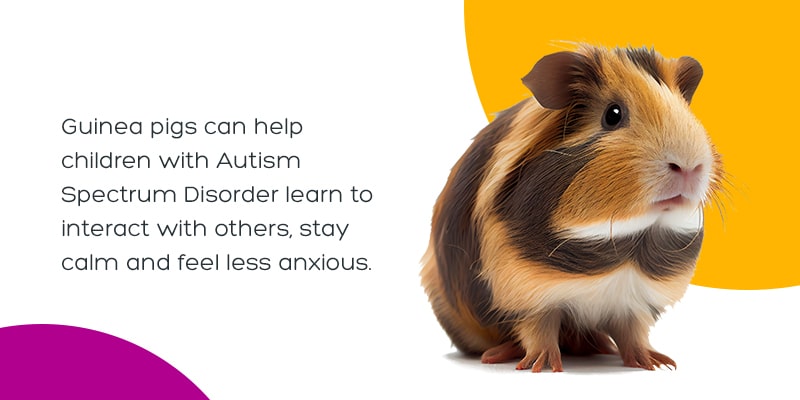Best Hamster Options for Calm Children
Hamsters have become one of the most popular pets for families, particularly for those with children. With their small size, low maintenance needs, and adorable personalities, hamsters can bring joy to any household. However, choosing the right hamster for a calm and nurturing environment is crucial. In this article, we will explore the best hamster options for calming children, along with essential care tips. You will learn about different hamster species, their temperaments, and what makes them ideal companions for young children.
Did you know that kids involved in caring for pets develop stronger empathy and responsibility? Including pets in the family can significantly improve emotional well-being. However, not every hamster is the same, and understanding their behavior is necessary to create a harmonious home. We will dive into key aspects that parents should consider when selecting a hamster, focusing on breed temperament, care requirements, and interactive potential.
Understanding Hamster Breeds
There are various hamster breeds that differ in size, temperament, and care needs. Understanding these differences can help parents make informed decisions about which type of hamster is the best fit for their calm children.
Dwarf Campbell Russian Hamster

The Dwarf Campbell Russian hamster is known for its friendly and gentle nature, making it an excellent option for children. These hamsters are small, typically reaching 3-4 inches in length, and are highly sociable. They thrive on interaction and can often be handled without showing stress. Their active and playful demeanor will engage children, fostering a positive bond.
Care Requirements
- Habitat: A spacious cage with plenty of bedding and hiding spots.
- Diet: A balanced diet of hamster pellets, fresh vegetables, and occasional treats.
- Interaction: Regular playtime outside the cage is essential for exercise and bonding.
Roborovski Hamster
The Roborovski hamster is another fantastic choice for families with calm children. Known for their small size and quick movements, Roborovskis are social creatures that tend to be more energetic but are gentle in nature. They enjoy burrowing and exploring, providing amusement for children who enjoy observing their antics.
Care Requirements
- Habitat: A multi-level cage with tunnels and climbing opportunities.
- Diet: Nutrient-rich pellets complemented with fruits and vegetables.
- Interaction: Less handling than other breeds, but very fun to watch while they explore.
Syrian Hamster
For a more traditional pet experience, the Syrian hamster is often the most popular choice. Known for their larger size (about 5-7 inches), Syrians are generally easy to handle and quite affectionate. They are solitary creatures, meaning that each hamster should live alone, which can teach children about responsibilities and care for their pet’s well-being.
Care Requirements
- Habitat: A single, spacious cage with a deep bedding layer for tunneling.
- Diet: Hamster-specific pellets, complemented with grains and occasional protein sources.
- Interaction: They enjoy interaction and can be trained to use a hamster ball.
Considerations for Choosing a Hamster
When selecting the right hamster, several factors should be taken into account to ensure a good match for your calm children.
Temperament
Each hamster breed has its personality traits. Easy-going hamsters, such as the Dwarf Campbell and Syrian, are excellent for children who may be timid around animals. It’s essential to choose a breed that complements your child’s demeanor and energy levels.
Age of the Child
If your child is particularly young, consider a pet species that requires less handling, such as the Roborovski hamster. On the other hand, older children may enjoy engaging more with larger and friendlier breeds, such as the Syrian hamster.
Space and Environment
Ensure that you have enough space in your home for the hamster’s habitat. Hamsters need a comfortable and enriched environment to thrive. An adequately sized cage with proper bedding, tunnels, and toys can greatly influence their well-being and demeanor.
Benefits of Hamster Companionship
Having a hamster can offer numerous benefits for children, including:
- Responsibility: Children learn to care for a living creature, enhancing their sense of duty and nurturing instinct.
- Empathy: Understanding an animal’s needs fosters emotional growth and patience.
- Social Skills: Interacting with pets can help children develop communication skills, particularly with their friends and family.
Essential Care Tips for Hamsters
To ensure a happy and healthy life for your pet hamster, it’s vital to know some essential care tips:
Regular Cleaning
Hamsters can be prone to odors if not maintained regularly. Ensure their cages are cleaned to prevent odors and keep your pet comfortable. A cleaning routine includes changing bedding and clearing out uneaten food weekly.
Feeding
Feed your hamster a balanced diet that consists of high-quality commercial hamster food, fresh vegetables, and grains. Ensure that any fresh food provided is safe and appropriate for hamsters to consume.
Health Monitoring
Regularly observe your hamster for any signs of distress or illness. Keeping a close eye on their behavior, eating habits, and fur quality can help identify potential issues early on.
Conclusion
Choosing the right hamster for calm children involves understanding various breeds and their temperaments, care requirements, and interactions. The Dwarf Campbell Russian hamster, Roborovski hamster, and Syrian hamster all present unique advantages that cater to a child’s nurturing qualities. By providing education around pet care, love, and routine responsibilities, you can cultivate a harmonious relationship between your children and their new hamster friends.
In summary, not only do hamsters offer companionship, but they also provide valuable life lessons for children as they embark on their journey of pet ownership. For further reading on related pet care topics, check out articles on different pet options and understanding pet behaviors.
